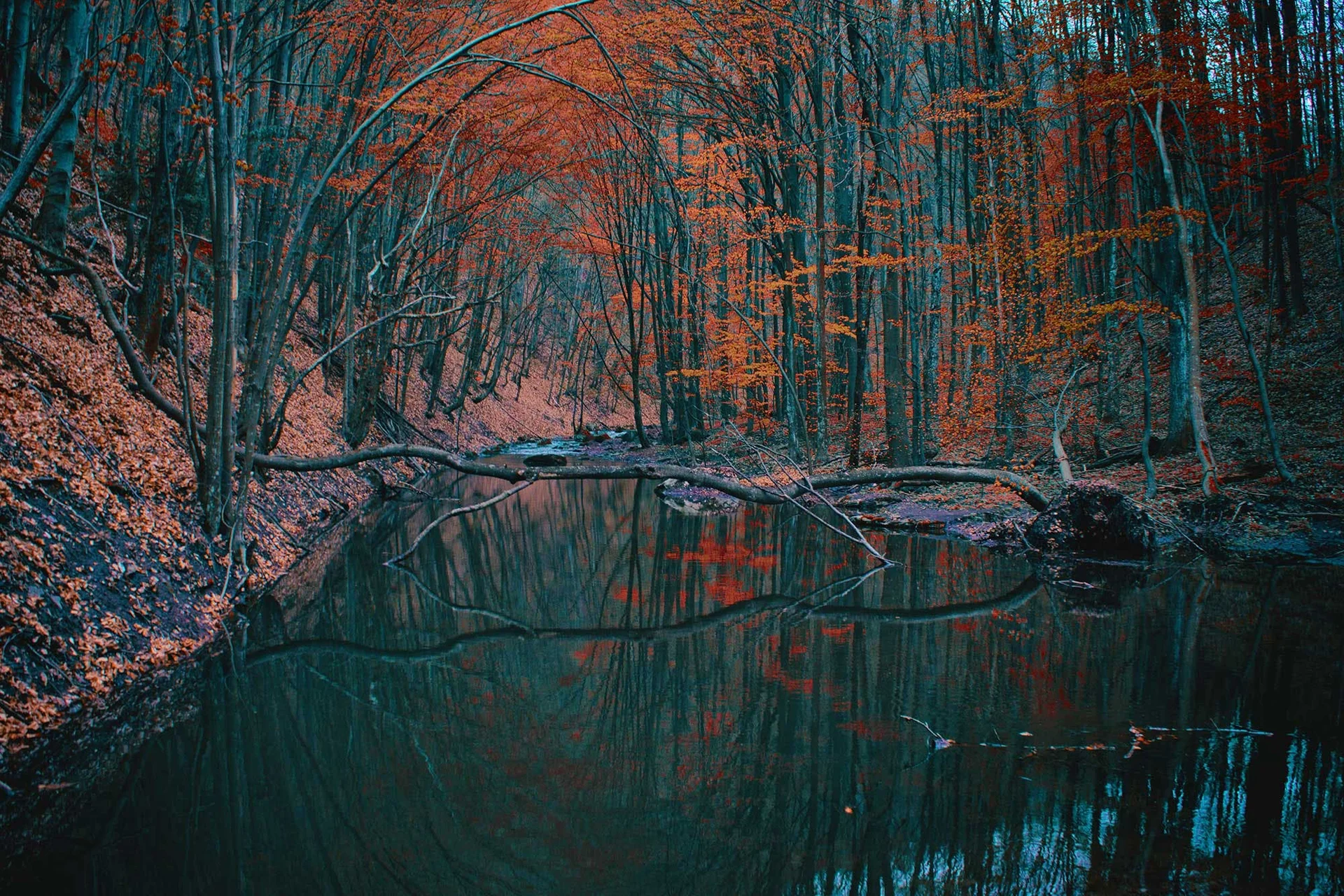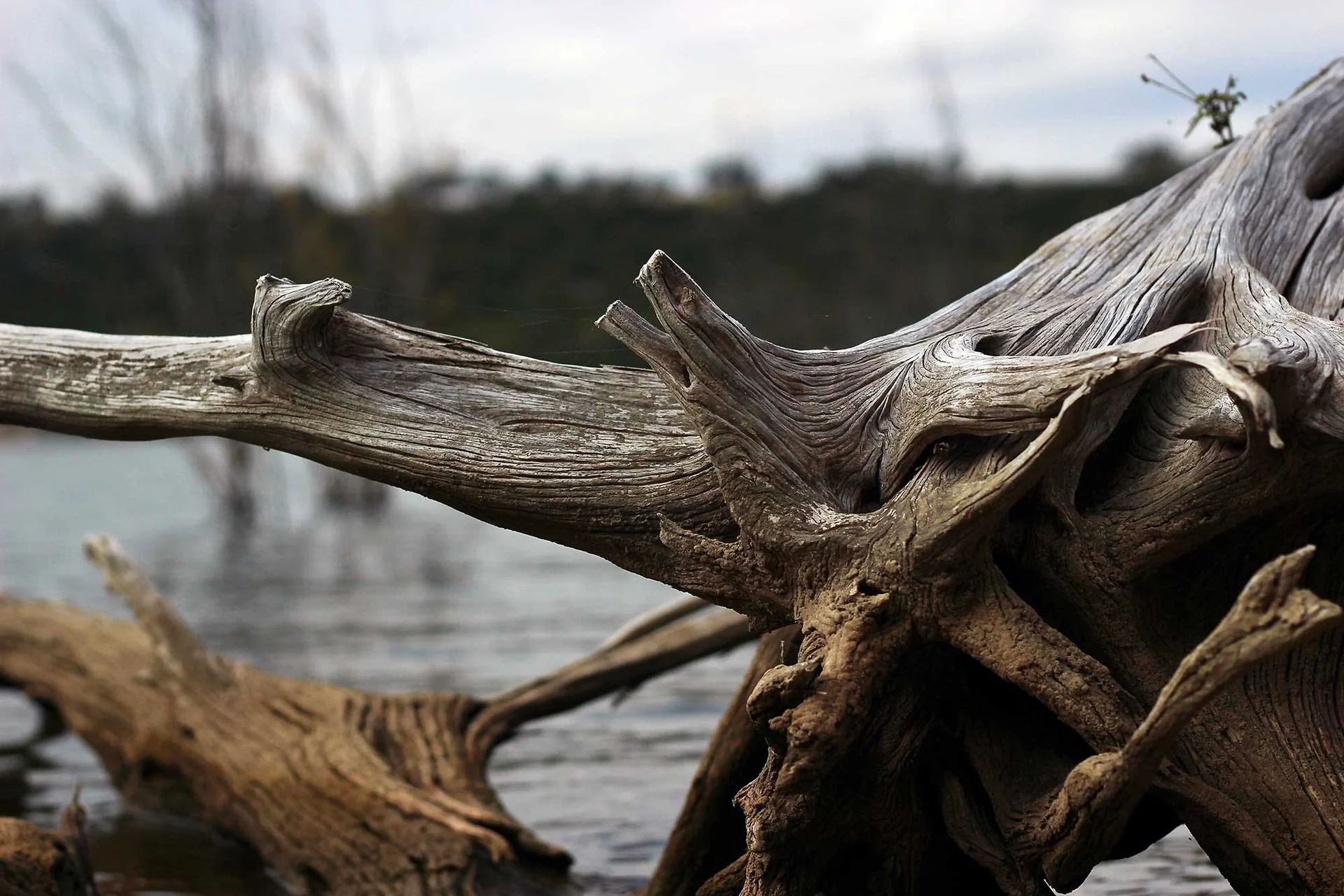Love Those Laydowns

Erosion, storms, root disease; trees fall for many reasons, but when they ends up at the water’s edge, all that structure that once stood vertically creates one of the most dependable of bass habitats — the laydown.
Depending on the tree’s original proximity to the water, and subsequent movement with water fluctuations, you’ll find laydowns with various amounts of their trunk and root mass in the water. More is better, but they’re all worth a stop.
In many ways, laydowns resemble docks in terms of their shelter, shade and feeding opportunities. The difference, of course, is that a fallen tree is a random, unplanned occurrence — and that can prove highly advantageous in otherwise barren canals or undeveloped shorelines.
When sizing up a laydown’s potential, analyze these details:
How much water?
Bank angles — flat or steep — are the most common influencers of laydown depth, but other factors may be in play. Tree size/height also dictates how far out the canopy falls, so this determines how much of the dominant cover will end up submerged.
Seasonality also affects laydown depth, as spring and summer months usually see the highest lake and river levels, thanks to snowmelt and rain runoff. Fall-winter typically find waterways at lower levels, either due to natural hydrology or what’s known as a “drawdown,” in which reservoir managers decrease lake levels by releasing water downstream to make room for the next round of spring influx.
During these natural and manmade low-water periods, a lot of shoreline cover becomes too shallow to accommodate bass. That means any laydowns that retain even a moderate depth can be gold mines of opportunity, so give these rare finds plenty of attention.

How long has it been there?
It’s not necessary to actually age the laydown, but not the presence or absence of leaves. A green, bushy canopy means a fairly recent fall. That’s not a bad thing, but with more time to attract residents, as well as forage, older laydowns typically harbor better quality and quantity of bass. Moreover, laydowns break apart with age, so as limbs drop to the bottom, this further diversifies the structure and creates more habitat points.
Any current hitting the tree?
Laydowns in rivers are the most obvious example, but reservoir lakes will see varying levels of current based on dam operation schedules. To a lesser degree, wind-driven current will also move water past a laydown. In any case, look for distinct flow-throw spots in the laydown’s structure (accumulating weeds often mark these spots) and expect the more active fish to position here.

Bait Selection
The key to maximizing laydowns is to start wide and work inward, so hit the perimeter with reaction lures like spinnerbaits, bladed jigs and topwaters retrofitted with Mustad KVD Triple Grip trebles. The most aggressive fish will usually be on the outer edges, so you don’t want to approach without giving these fish a chance to bite, or you’ll blow some of your best opportunities.
From there, move in incrementally by probing the canopy with your favorite flipping jig or a craw or creature bait Texas-rigged on a Mustad KVD Grip Pin flipping hook. Hit all the shadowy hidey holes and pay particular attention to the notches where main limbs meet larger limbs or the trunk.
As you get closer to the laydown, run a squarebill crankbait along the larger limbs and the trunk. Give each laydown a thorough workout and you’ll learn to appreciate these structures as legitimate fish magnets.


